The Covid-19 pandemic which required extended citywide lockdowns brought to the fore emergent trends within a highly compressed time span. I’m paraphrasing what Hsing Yao Cheng sent to me in an email a full month after we sat down for an interview to talk about the upcoming mega-development from GuocoLand.
Cheng, the Group Managing Director of GuocoLand, walked me through the development that everyone is anticipating to transform the Beach Road district – a development comprising the office tower Guoco Midtown, unveiled in 2019 and planned for completion in 2022, and the residential tower Midtown Bay, the offshoot of the acquisition of a prime site on Tan Quee Lan Street, which straddles the Bugis and Beach Road areas. And, of course, the planned public facilities and spaces in between.
Guoco Midtown will “introduce new concepts that support new work and lifestyle trends” – according to the official communique – while the 33-storey, residential tower Midtown Bay, will be “plugged into the vibrancy, convenience and abundant facilities” of the integrated development.
Yes, it seems no one builds straight-up office towers and residential towers anymore. There is now instead a new behemoth, an amalgam of high concepts, projected functions, and adjectives – a reflection of how life is being lived in urban centers across the globe. Home life blends easily into work, work bleeds into play, play morphs into a life. For all intents and purposes, the Beach Road “transformer” will propose a blueprint for the future, one that will satisfy – nay, anticipate – the needs of residents and users in decades to come. It would be a ‘city of the future’.
It is a highly tantalizing proposition – building for what’s yet to be – and I looked forward earnestly to the aforementioned interview with Hsing Yao Cheng, who I may have met in past, perhaps when he was at Urban Redevelopment Authority or the Centre for Liveable Cities, where he held leadership positions. I wanted to know what he thought of the ‘city of the future’.
- THE RELATIVITY OF THE FUTURE
- DEFINING PLACES
- WHERE IS HOME?
- SHOCK-PROOF FUTURE
The Relativity of the Future
“The future” is a relative term. It can be anything beyond today, in fact, beyond now. By the time you reach it, it is no longer. Planning for it, however, gives it a more practical definition, a handle.
Building ‘a city of the future’ is an important and enticing proposition. If grounded on sound principles and executed well, it has the potential not only of changing the physical environment that is being inhabited by people, but also engender new ways for its inhabitant to engage with it.
Cheng offered highly plausible bases of the concept for a city of the future. “Living, working, and playing will become more seamless,” he said. “Homes have to function as offices, and also adaptable for entertaining family, friends or even business associates. On the other hand, offices cannot be just a place to work, but also a place to socialize, network and recreate.
“Increasingly, it will be more difficult for companies to predict growth plans, and so their offices need to be more flexible and adaptable. An integrated, mixed-use city, with seamless connection to public transits, should be the model for future cities and designed into it are technologies that make our offices and homes smarter, that make life more efficient and effortless.”
Cheng also foresaw the return to core values. “Progress can be double-edged,” he says. “Technology, for example, brought productivity and convenience, but also pollution, congestion and stress. Digital connectivity gives us the freedom to work anywhere we want, but also leashes us to work even when we are on holidays. Along the way, we have forgotten what our core values are. Buildings are getting bigger and stranger because they need that strong imageability to be noticed. As cities become more and more built up, people are more and more removed from nature and greenery. Managing stress and mental health will become more important.”
As I listen to the digital record of our conversation, I realize how relevant those ideas have become to our present, post-pandemic reality. GuocoLand’s vision for the project seems to have anticipated trends that are now emerging.
When they were thinking about the concept of ‘the future’, they wanted to embrace the changes in lifestyles and technologies that are coming, and asked basic questions about what people will demand for their well-being, Cheng said when we talked about technological disruptions and cities of the future. “The future will not be exciting if people do not feel better and happier,” he said, alluding to a view of technology as an enabler, a tool for a better life rather than its driver. “Things that are important to people have not really changed through time. We still want a sense of purpose in our lives; we are social beings and we yearn for social activities; we are biophilic and we enjoy nature in our midst.”
- THE RELATIVITY OF THE FUTURE
- DEFINING PLACES
- WHERE IS HOME?
- SHOCK-PROOF FUTURE
Defining Places
During our conversation, Guoco Tower, GuocoLand’s game-changing development in the Tanjong Pagar district, inevitably came up. Perhaps we needed a reference for the company’s capability—we were aware of the development’s success in redefining a place, and finding a unique connection with the people who still live in what was once a sleepy pocket just outside the CBD.
I mentioned to Cheng how powerfully Guoco Tower has transformed the Tanjong Pagar that everyone knew and loved, and he recounted how he marvelled at finding people from the neighborhood – not just the smartly dressed, coffee-swilling office cadets in the building – using the pathways, the public facilities, and the park, creating shortcuts and connecting with the building as if it has been there for a long time.
“In anticipating people’s needs in the future, we have plans to bring back the things that are good for the well-being of people, such as nature, public spaces, scale, street life, and human interactions – aspects that have been emphasized less during the development of cities.”
At Guoco Midtown, for instance, they are placing a notable emphasis on greenery and landscaped spaces. Overall, the total area of greenery and landscaping will be 3.8 hectares, even more than the combined site area of 3.26 hectares. Each of the many garden spaces will be conceived to support different usage and ambience. “We have also consciously introduced a diverse range of plant species, including many native ones to create a more natural environment in and around the buildings, so that the people in the building will feel that the natural environment surrounds their work and living spaces.”
GuocoLand is mindful of scale. At a time when hulking developments mark almost every corner of the city, asserting their might through size, they carefully assess the immediate vicinity instead, looking at how people use and behave in public and private spaces, and from there decide on a scale that works harmoniously with the rest.
Although Guoco Midtown is a huge development, Cheng claims they have consciously created public spaces that are ‘human’ in scale. “For example, we have introduced streets that mirror the historic streets – such as Tan Quee Lan – into the new development. The streets branch off into public spaces surrounded by low-rise or conservation buildings to create more human-scaled and intimate spaces within the mega-development. The public spaces that let people gather for events and activities form the datum around which all the other components, like office, apartments, and shops are organized.”
Guoco Midtown’s second residential development at Tan Quee Lan Street will comprise two 30-storey residential towers with more than 500 units of luxury apartments and a retail podium. Separately, Guoco Midtown will have three retail villages, including the one at Tan Quee Lan.
For Guoco Midtown office, they are introducing a first of its kind ‘Network Hub’ – a business and social club for the office tenants to network and socialize. There will be lounges, collaborative spaces, meeting and dining rooms, office suites, swimming pool, jogging track, exercise stations, etc. for the exclusive use of office tenants and members. The aim is to create a more liveable office environment, and a workplace that is also for socializing and recreation. “This is the lifestyle of future talents,” Cheng affirms confidently. “We’ve also introduced the concept of ‘core and flex’ into our office leasing, that is, the offices will have a permanent (core) as well as a shorter-term (flex) component. This caters to the businesses whose needs are dynamic.”
- THE RELATIVITY OF THE FUTURE
- DEFINING PLACES
- WHERE IS HOME?
- SHOCK-PROOF FUTURE
Where is Home?
“All the homes in Midtown Bay are designed to support living, working and entertaining at home. One of the bedrooms is designed such that it can be converted into an office, or become an extension of the living room. All residents can also access, through membership, the Network Hub so that they can also conduct business meetings there.” I’m quoting Cheng verbatim. He said this to me before the lockdown, before the feverish scrambling for toilet rolls, before the mandatory social distancing and masking. And here I am, working from home and realizing that it is quickly morphing into a reality.
“Who do you have in mind as target market for this integrated development – do you foresee more end-users, say, buying apartments in Midtown Bay, or do you expect investors to be a big part of the mix?” I asked Cheng.
“Being in the CBD, the Beach Road/Bugis area is a very established location for home investors because it has immediate access to a huge rental catchment from Singapore’s highest concentration of quality offices and their multi-national companies,” he replied.
“We also see the opportunity to grow the end-user market because people who live here will spend way less time to travel to work. It is also a direct train ride to many premier schools along Bukit Timah Road, and many polytechnics and universities. So, families with school-going children can get to school quickly and safely.”
Within a five-minute walk is a huge variety of amenities like food, shopping, entertainment, culture and medical facilities, he pointed out. So, the liveability is extremely high. “However, while in most CBD residential developments, recreation space tends to be limited in size, we have created here a lot of green and recreational spaces that collectively add up to more than five soccer fields.”
- THE RELATIVITY OF THE FUTURE
- DEFINING PLACES
- WHERE IS HOME?
- SHOCK-PROOF FUTURE
Shock-Proof Future
I texted Cheng one morning, on a weekend. I was already done with the story, but given the dramatic turn of events – by then the circuit breaker had felt like a lockdown, and grim statistics were all that the media had. I wanted to hear what he had to say. I pointed out to him that a number of ideas we discussed during our interview were becoming relevant.
“When we were conceiving the project back in 2017-18, it was already quite clear to us that our homes and offices have to change,” he said in an email reply. “There was an increasing blurring of live-work-play. In our minds, the home needs to be for living, working, and entertaining, and thus we have designed the apartments to be as open and flexible, with walls that were pre-planned to be knocked down or converted into glass doors, etc. so that the space can be easily adapted into home offices.”
Through their tenants at Guoco Tower, they already observed many companies were moving towards ‘activities-based’ planning for the office, with a high level of adoption of agile workplace and work from home. “So, the office is an important place for collaboration, team-building and imbibing of corporate culture. On the other hand, we also observed that companies increasingly have difficulty making accurate projections of their growths and headcounts, because the economic environment is now so dynamic.
“Thus, with these in mind, we conceived of the office with a ‘core and flex’ concept, whereby office leases will have a permanent ‘core’ component, as well as a more flexible and shorter term ‘flex’ component. We’ve also introduced a Network Hub into the entire mixed development. It is essentially a space for collaboration and networking,” he said, returning to a highly innovative idea.
“The office is not just a place we come to do our paperwork and emails, because you can now do all of that at home. But rather, the office is a place to collaborate with colleagues, socialize with them and with business partners; it is also a place to partake in activities other than work – go for a swim, exercise, wine and dine. Working from home is fine when we are working with people we already know very well, but if the team is new, or if there’s a new member, or if the business is going through a pivoting process, the need for physical space to collaborate and socialize is very critical.”
Of course, Cheng and his team, and the powers that be in the organization were not designing for a post-pandemic reality. Rather, they were envisioning the demands of life in a brave new world. It is being envisioned to succeed without or without global threats like the pandemic.
“Through the pandemic, we can see that the societies that are more cohesive and socially conscious have been more resilient and better at responding to it,” Cheng highlighted. “While we are now all pre-occupied with how and when the pandemic will be over, this is by no means going to be the last of a global existential challenge. Climate change remains the greatest issue of our times. We cannot predict what future shocks would come, but we can never go too wrong when we build a new building or continue to create our city on the principles of sustainability and livability.”
Styling by CK Koo, Grooming by Benedict Choo
Shot on location at Guoco Tower






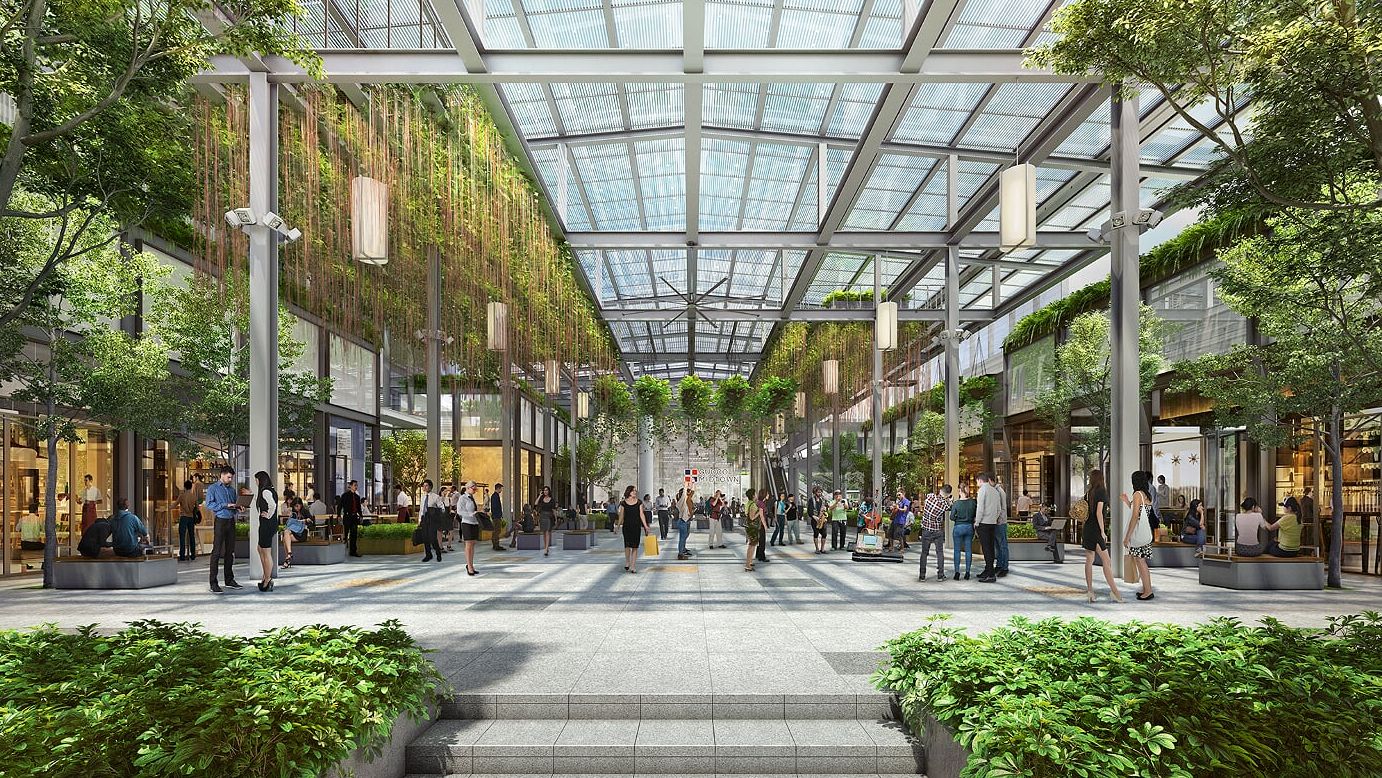
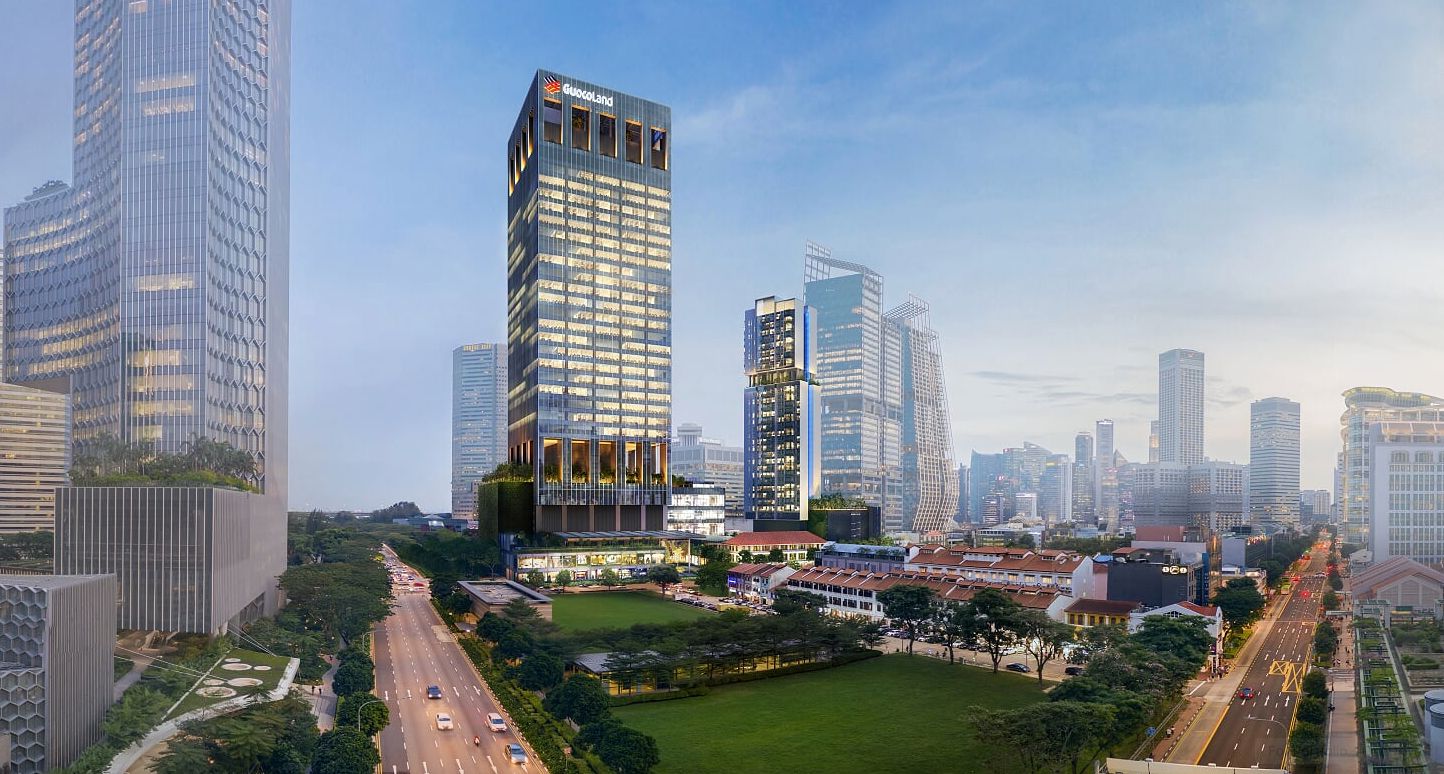
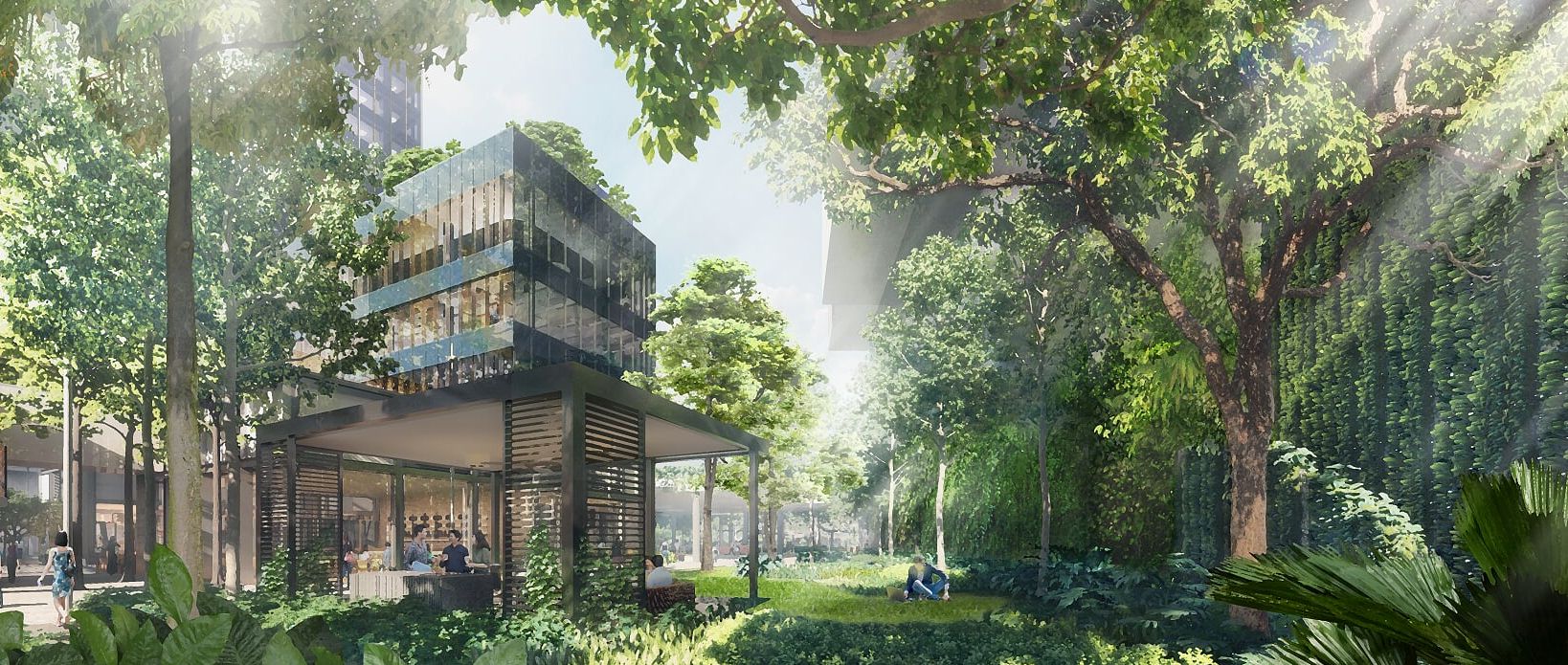
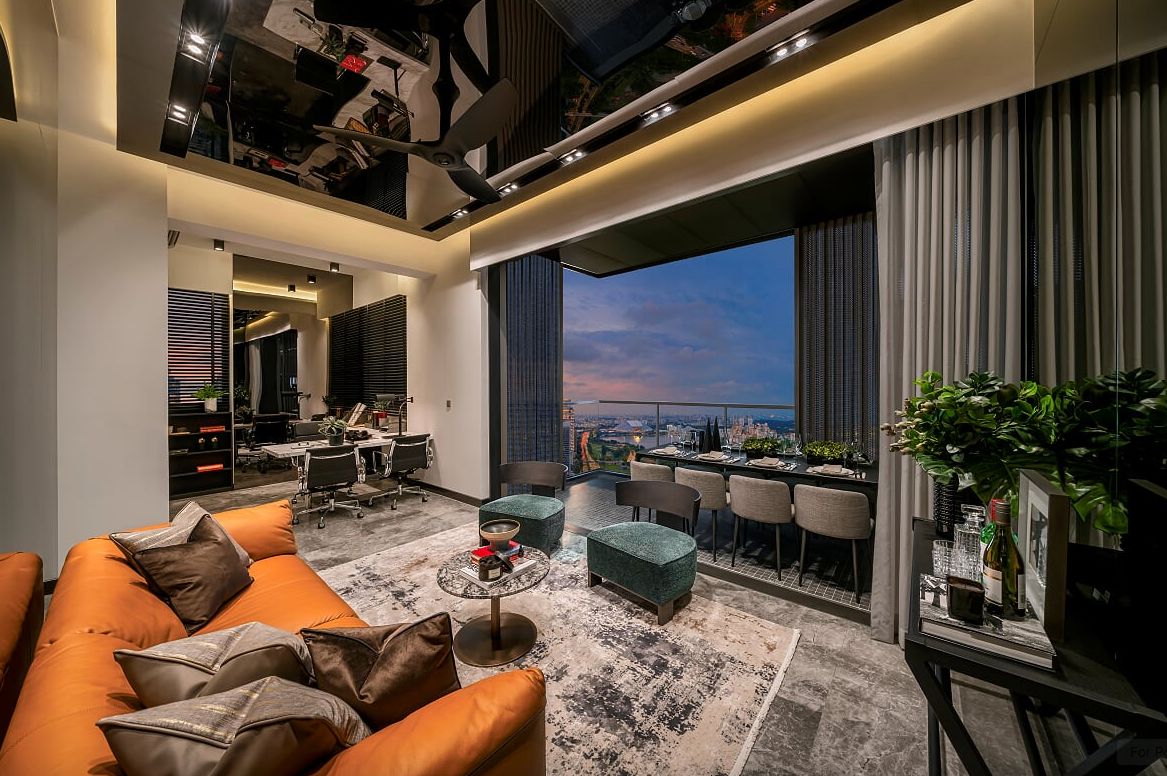
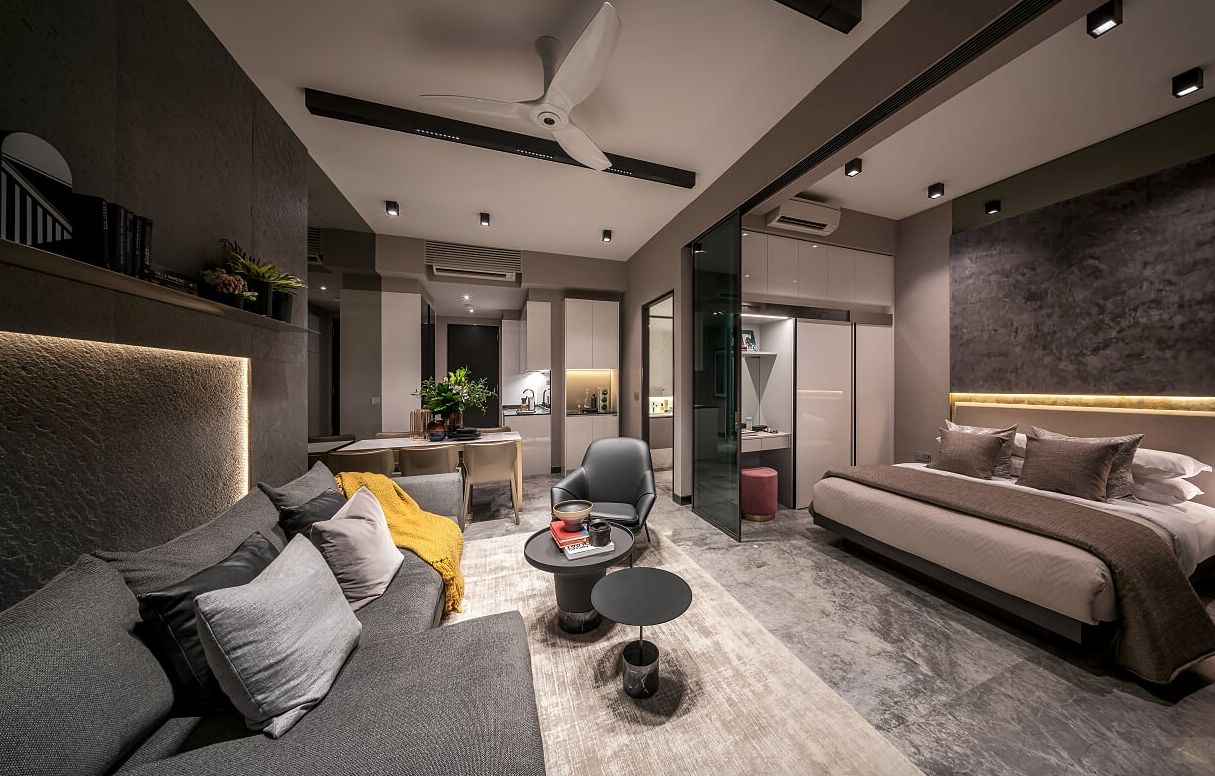





 Back
Back